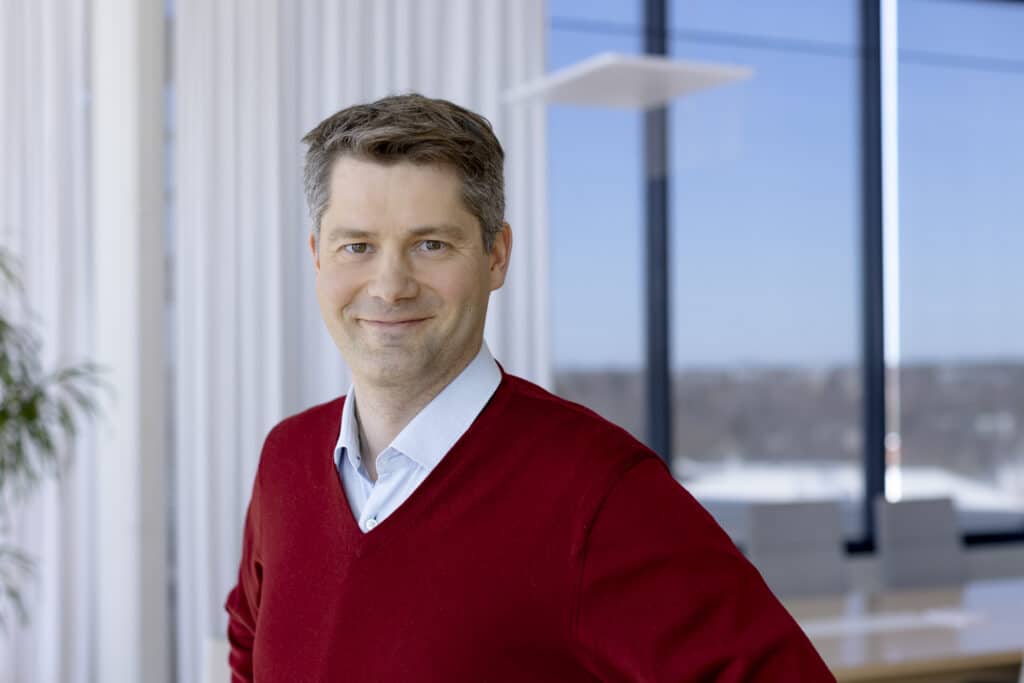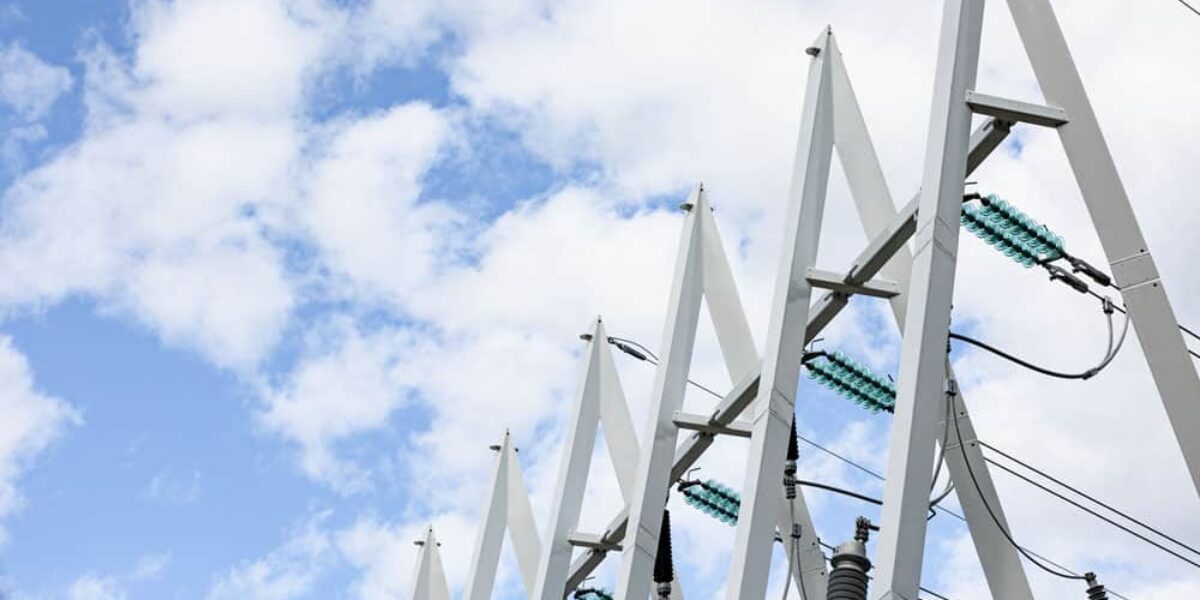One important step in the green transition is the shift from fossil-fuelled energy to more environmentally sustainable forms of electricity, such as wind and solar power. These forms of production share common features, including dependency on the weather and grid connections through frequency converters, also known as power converters. The synchronous machines in conventional power plants are connected physically and respond naturally according to the laws of physics. Conversely, power converters must be programmed to react to changes in the grid frequency and voltage.
The dominance of converters represents a technical challenge for the power system and could lead to grid instability. For example, there is a lot of converter-connected production in Ostrobothnia and in the other Nordic countries, especially northern and southern Sweden and Denmark.
“The momentary proportion of converter-connected power production is rising sharply in Finland. The year before last, we reached 50 per cent, and in recent months, the figure has been close to 60 per cent at certain moments. Naturally, it varies greatly according to the wind speed, and for example, annual maintenance at nuclear power plants also affects the overall proportion,” notes Antti Harjula, Manager, Power System Engineering at Fingrid.
National and Nordic solutions
System-level stability challenges call for joint Nordic solutions. Accordingly, Fingrid has brought the Nordic transmission system operators together to focus on the demands of a converter-dominated power system and develop analytical methods to ensure the stability of converters.
Action is also required on a national scale. Fingrid has revised the technical requirements for power plants connecting to the main grid. The company also invests in technologies to stabilise the grid, including synchronous compensator and static synchronous compensators (STATCOM).
“Grid forming technology can stabilise the system by creating the same favourable properties that synchronous machines offer. For example, it provides a near-instantaneous active power response to resist changes in the voltage phase angle. Finland is an international frontrunner in implementing grid-forming capabilities. Grid-connected battery energy systems are already required to have these properties in existing and future converter-dominated areas,” says Harjula.

The new transmission lines under construction will boost the stability of the converter-dominated grid and new market-based stability enhancing solutions have been introduced in recent years, such as the new Fast Frequency Reserve (FFR). The FFR can be activated within about a second to counteract lack of adequate inertia from synchronous machines.
Controllers at wind and solar power plants must be fine-tuned
Tackling the stability challenges will also require the transmission system operator’s stakeholders to take action: wind and solar power producers, power plant manufacturers, owners of grid energy storage systems, industrial customers, and distribution system operators.
As things stand, Fingrid may need to limit a plant’s electricity production or request a change of operating mode at certain times, such as during outages, to ensure the stability of the grid.
Tackling the stability challenges will also require action from wind and solar power producers, power plant manufacturers, owners of grid energy storage systems, industrial customers, and distribution system operators.
The oscillations in converter-dominated power system areas in recent years have mainly been caused by overly aggressive settings in voltage controllers at wind farms. The original tuning of controllers only took into account the production unit on the site, ignoring all the other converter-connected production facilities in the grid. The principles for tuning voltage controllers at power plants have been revised to account for the combined effect of multiple plants. Consequently, some voltage controllers at existing wind farms will need to be retuned.
“In the future, Fingrid will need more precise models of plants already at the planning stage. In addition, the plant planning process must consider other nearby converter-connected plants and their impact on grid stability. In the future, closer cooperation between customers, network operators, power plant operators, manufacturers, and consultants will be necessary to ensure the technical operation of the grid,” Harjula emphasises.
Grid-forming capability ensures stable wind and solar power operation
Before a new production plant is commissioned, Fingrid conducts simulation tests to verify the plant’s compatibility with the grid. Fingrid is also planning a model that allows customers to conduct simulation checks, partly at their own initiative, taking into account the response of the entire power system.
The grid code specifications for power generating and grid energy storage facilities, currently in the consultation phase, only require batteries to have grid-forming functionality because the only widely available capabilities on the market are for batteries. Wind and solar power plant manufacturers are still developing grid-forming capabilities.
In a society pushing for carbon neutrality, it is essential that the manufacturers of wind and power plants develop grid-forming capabilities for their plants.
“Fingrid plans to require wind and solar power plants to have these features in the next revision of the grid code specifications in a few years’ time. Grid-forming capabilities are currently thought to be the only cost-effective solution for enabling substantial growth in the volume of converter-connected production without compromising system security. In the interest of a carbon-neutral society, it is essential for power plant manufacturers to develop these capabilities,” Harjula emphasises.
New demands for industry and distribution system operators
Fingrid has received connection enquiries for several very large industrial plants, such as electrolysis plants, data centres, and metal industries. Large consumption concentrations, especially when connected via converters, are starting to have a significant impact on the stable operation of the grid. When an industrial plant demands over 100 megawatts of power, new requirements are needed for the plant’s technical functionality and modelling.
“The exact threshold will be clarified when Fingrid completes its analysis. Requirements have already been imposed on some large projects within the existing regulatory framework,” Harjula points out.
During certain outages, distribution system operators must impose restrictions on wind and solar power to maintain network stability. In addition, the planning of regional networks must take into account the protection of converter-connected facilities and the impacts on grid protection.
Fingrid’s investments ensure grid stability
Fingrid’s investments to ensure grid stability are progressing well. New transmission lines are being planned and built. The first large synchronous machine without an energy source—known as a synchronous compensator—will be completed next year at Fingrid’s Jylkkä substation in North Ostrobothnia. The synchronous compensator will help balance the grid. A STATCOM is planned for completion at the Kristinestad substation in 2027. The STATCOM will support the stable operation of wind and solar power plants connecting to the grid in Ostrobothnia and surrounding regions. Another STATCOM is planned for the Anttila substation in Southern Finland, with commissioning expected in 2028. The new Jylkkä–Alajärvi–Toivila connection will reinforce the Ostrobothnia region in the same year. A new connection from Kristinestad to Nokia will be completed a year later.
These reinforcements and new grid code specifications will enable substantially more converter-connected production and consumption facilities to connect to the grid in central and northern west coast regions.
For more information on the converter-connected system and instructions for converter-connected plants, please visit Fingrid’s website:
Nordic Grid Development Perspective (Chapter 3. Transition to PEID-dominated power system)
Voltage control tuning principles for converter-connected plants
Updated power plant modelling instructions
Grid-forming requirements for grid energy storage systems in converter-dominated areas






